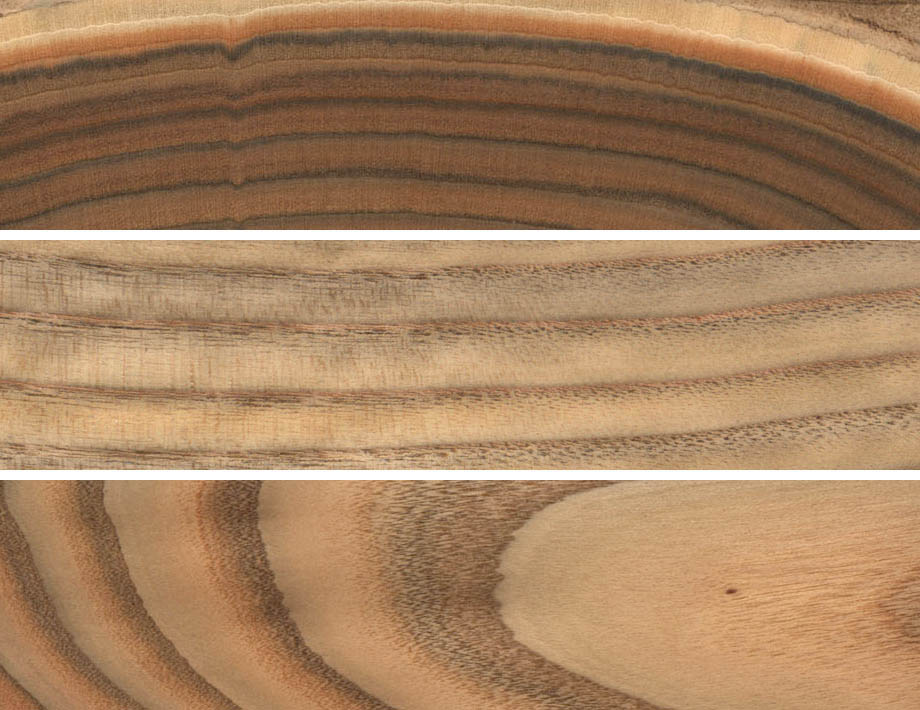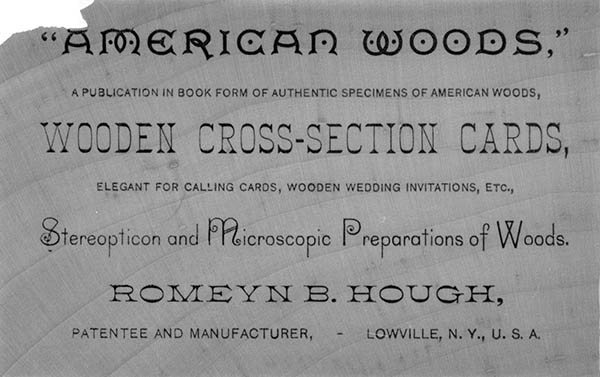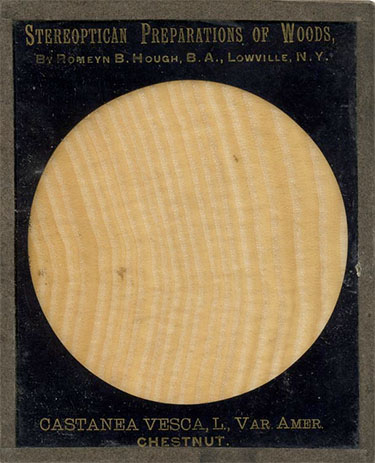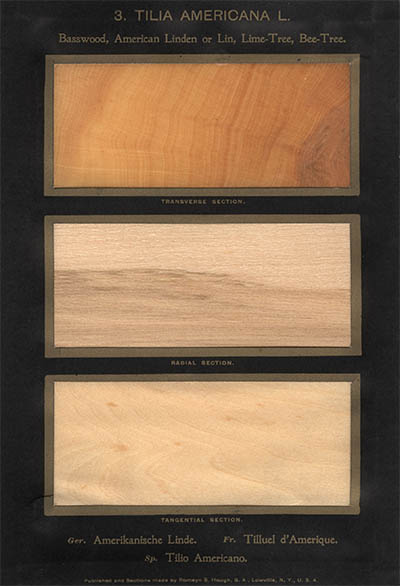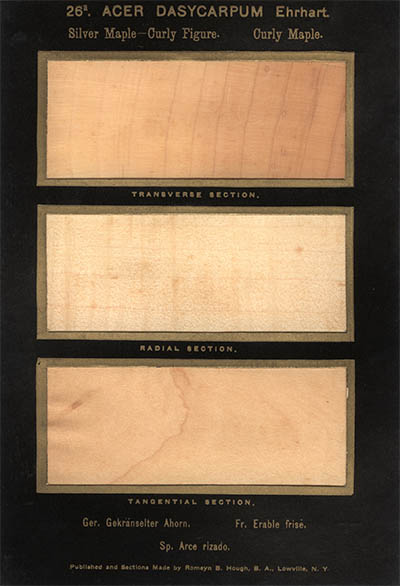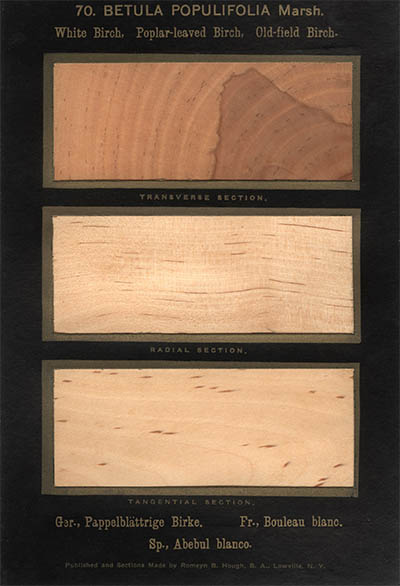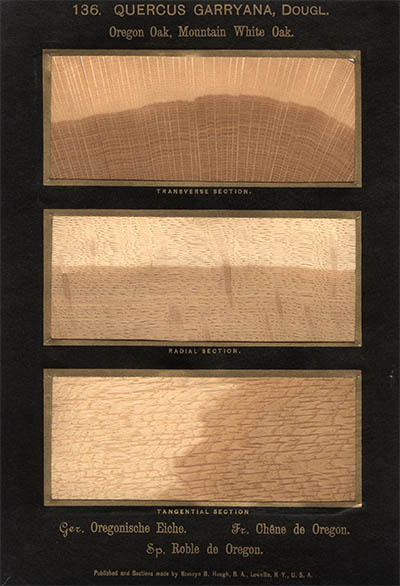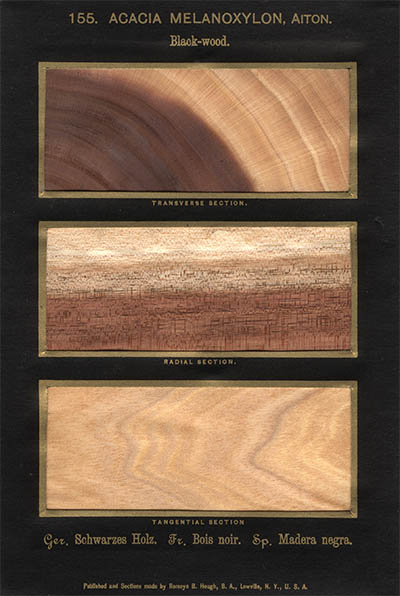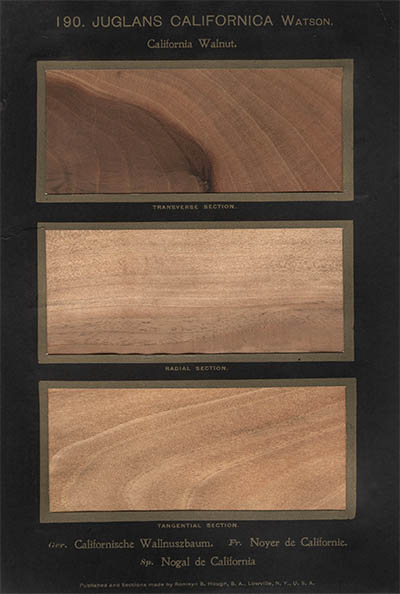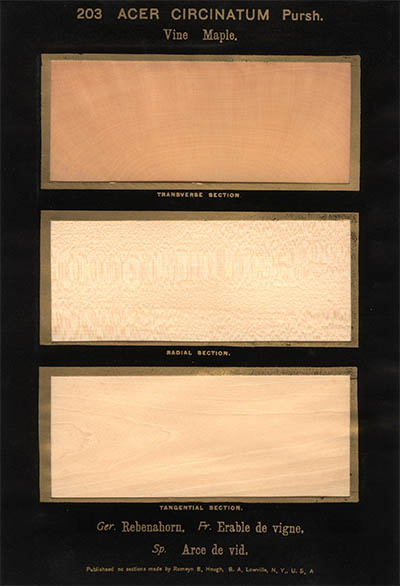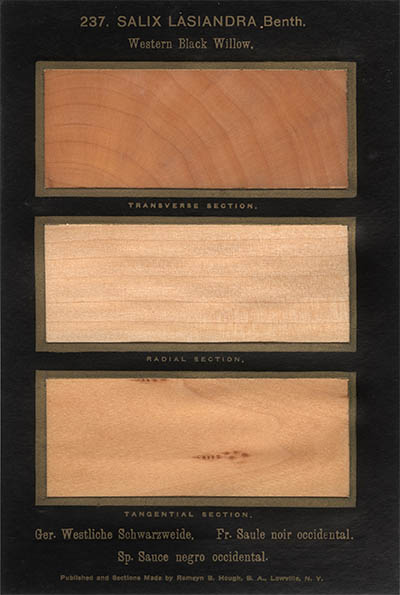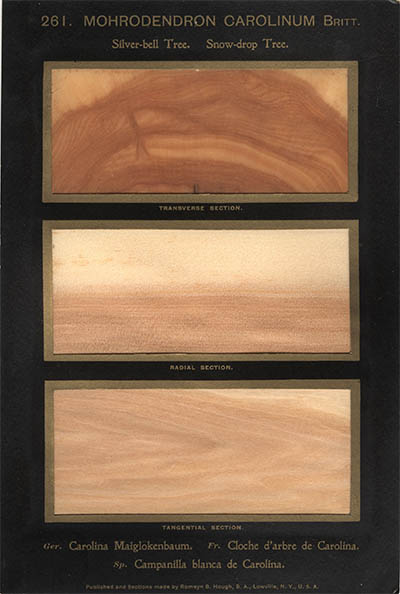Romeyn Beck Hough (30 Mar 1857 – 2 Sep 1924) was the second child of the noted naturalist Franklin Hough and his second wife Mariah Kilham. Franklin was, among other things, a physician, historian, naturalist and census superintendent. His census work caused him to become alarmed at the depletion of the North American forests and after he presented his paper “On the Duty of Governments in the Preservation of Forests” in 1873 he was appointed as the first US forestry agent. In 1877 he published the landmark Report on Forestry1 and is now considered the father of American forestry.
Romeyn followed in his father’s footsteps and received a degree in botany from Cornell in 1881. He even began to study medicine but that was cut short by his work on “the machine.”
Hough’s machine was a specialized veneer cutter with a knife capable of slicing wood sections down to a thickness of 1/1200". He patented his process in 1886 and began a commercial enterprise of cutting and printing wooden cards “for all fancy and business purposes.”
Wooden card advertising Hough’s wooden cards. LOC
Using his thinnest tranverse sections, Hough also prepared and sold magic lantern and microscope slides:
Wooden cards and lantern slides were one thing, but Hough had a much more ambitious project in mind. Inspired by the German botanist Hermann von Nördlinger’s volumes of European tree cross sections3 he set out to use his machine to create his own version with, according to the prospectus, “the ultimate end in view of representing, as nearly as possable, all of the American woods, or at least the most important.”
Hough began work on The American Woods in the summer of 1883 and it would occupy him for the rest of his life. He insisted on personally selecting each tree and went to extrodinary lengths to find positively identifiable specimens. For example, as he stated in 1907: “I searched in vain two successive seasons for the pistillate flowers of the common Butternut, so regularly did the late frosts of spring destroy them.”
For each tree he window-mounted three cross sections in waterproof bristol board. These plates – 25 or so per volume – were housed in an octavo-sized box with a pamphlet containing “copious notes” The first volume of The American Woods – covering the trees of his native New York – was self-published in early 1888 and was available for five USD by subscription.
An early review stated: “It is absolutely without rival, and as long as there are trees in North America it will continue to be a standard work.” In 1889 The American Woods received the grand prize at the Paris Exposition and later, gold medals at the Columbian, Pan-American, Louisiana Purchase and Alaska Yukon Expositions.
Between 1888–1913, Hough sporadically published 12 more volumes. After his death in 1924 his daughter Marjorie completed the last volume. In all 14 of a planned 15 volumes were published covering 354 species with 1,056 wood samples.
Hough left behind a vast collection of specimens and some of these were included in Harrar’s 1957 Hough’s Encyclopedia of American Woods and the 1958 Hough’s American Woods Basic Visual Aid Kit.5 The remaining collection – more than one million sections – is now apparently for sale to a qualified institution.
1. Hough, Franklin B. Report Upon Forestry. Washington: Government Printing Office, 1878 (Google, WorldCat).
2. Hough, Romeyn Beck. “Wooden Card for Business and Other Purposes.” US patent 335,703. 9 Feb 1886 (Google).
3. Nördlinger, Hermann von. Querschnitte von Hundert Holzarten [Cross Sections of One Hundred Wood Species]. Stuttgart: J. G. Cotta, 1852–1888. (WorldCat). For a detailed historical review of the 11-volume series see: Bubner, Ben. The Wood Cross Sections Of Hermann Nördlinger (1818–1897). IAWA Journal, 2008 29(4): 439–457 (online).
4. Hough, Romeyn. The American Woods, Exhibited by Actual Specimens and with Copious Explanatory Text. Romeyn Hough: Lowville, New York, 1888–1924 (WorldCat).
The entire series is available from the North Carolina State University Library, University of California Libraries or the Yale Beinecke Library. Unless otherwise noted the images here are from NCSU.
5. Harrar, Elwood. Hough’s Encyclopaedia of American Woods. New York: Robert Speller & Sons, 1957 (WorldCat).
30 Oct 2013 ‧ Design
